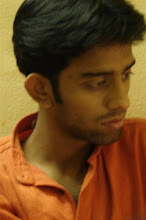Friday, July 11, 2008
Jab I met a few good men- Part 1
Tuesday, June 10, 2008
Remember the Royals
On 1st of June, 2008, the world witnessed the culmination of the 44-day cricketing extravaganza named IPL. After two unexpectedly dull and one-sided semi finals, the law of averages promised a tighter finish in the final. And so it was! Being a Chennai Super Kings supporter (more appropriately, a Dhoni fan), I was desperately hoping for a verdict in favour of the men in yellow. The absence of Graeme Smith, their experienced, influential and in-form opener, had raised expectations. Yet, as Sohail Tanvir pushed the ball into the gap and took the deciding single of the last ball to trigger huge celebrations in the Rajasthan Royals camp, I could not stop myself from applauding for the deservingly victorious team.
As Shane Warne and his men received the glittering trophy, for a moment, I felt as if I was watching a movie. Have we not seen it all before on the silver screen? A team rated as “under-dog”, triumphs against all odds, and becomes the champion- doesn’t this script sound very familiar? Let me site a few examples: a determined ‘black’ coach called Herman Boone inspires his young team to get rid of racism issues and win the American football championship-Remember the titans(based on true events ); a tainted player Kabir Khan (read Mir Ranjan Negi) redeems himself as he manages a bunch of hockey wielding ladies to a World Cup triumph-Chak de India; and above all, the story of a group of peasants, led by some “Bhuwan”, playing a game of cricket against the british to relieve themselves from the burden of “Lagaan”. The list is certainly not exhaustive and one may suggest many more such instances, both fictional and true, which narrate and celebrate the success of the underdog. The story of the rise and rise of Rajasthan Royals has been no different from the mentioned tales of success and glory. The characters and the events might have been different, but the script has invariably been the same.
The happy ending is always preceded by a set of challenges that one must overcome to be the winner. To start off, the players need to come together as a team. It is perhaps the most difficult task as regional, racist and personal issues can split the team into individual camps. Someone needs to be the guardian, the ‘gunda’ of the team, and it is usually the responsibility of the captain and the coach. In case of Mr. Warne, he was the captain/coach/player/mentor - the onus of nurturing the team was entirely on his shoulders. I am sure the presence of an international captain in Graeme Smith would have certainly helped him. Nevertheless, he deserves all the credit for moulding a group of eager individuals into a unit, and extracting the best out of them.
However, as one has often seen, even the most successful campaigns start with a false step. So while, Kabir Khan’s ladies were thrashed 7-0 in their first match in Chak de…, Warne’s boys were convincingly beaten by 9 wickets in their first encounter. It gave the critics another opportunity to have a go at the Royals. What the team needed at that point in time was a tonic of victory, which they achieved against Kings XI Punjab in their next match. But, the turning point in my opinion was the win against Deccan Chargers, where the team successfully chased a stiff total of 214. Yusuf Pathan’s blistering knock, followed by their captain’s heroics in the last over gave them the much-needed dosage of self-belief and confidence. From there on, things started falling perfectly in place. Suddenly, a team devoid of any big names became the talk of the tournament. Swapnil Asnodkar appeared as explosive as Virender Sehwag, and Yusuf Pathan as swashbuckling as Andrew Symonds. The world saw glimpses of Andrew Flintoff in Shane Watson and the legendary Wasim Akram in Sohail Tanvir. Even the lethargic Munaf Patel seemed to have transformed under the magic of Warne. Most importantly, they all formed a lethal outfit, where every individual enjoyed each other’s success. The team, defying all predictions, made it to the final, and the rest, as the cliched line goes, is history.
That’s how the incredible story of the Rajasthan Royals unfolded. Does it not have all the ingredients of a “masaaledaar”, entertaining Bollywood (or even Hollywood, for that matter) blockbuster. I am sure someone is already contemplating the idea. But even if someone does not, it hardly matters. For we have seen it all unfold in front of us. We’ll always remember the royals, won’t we? HALLA BOL…!!!
